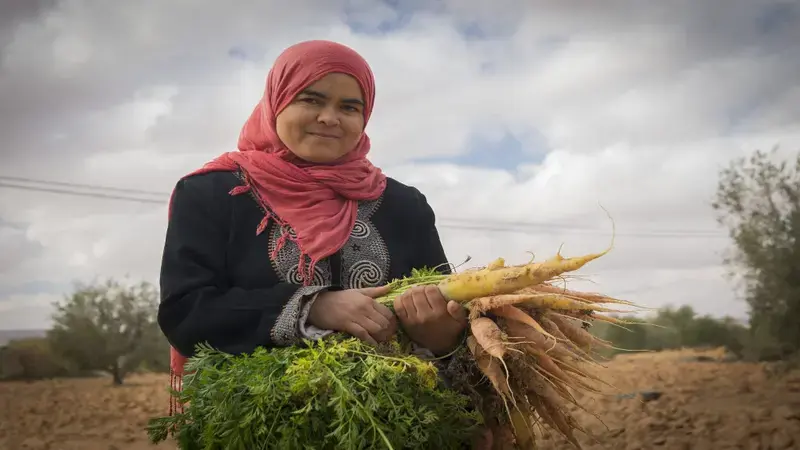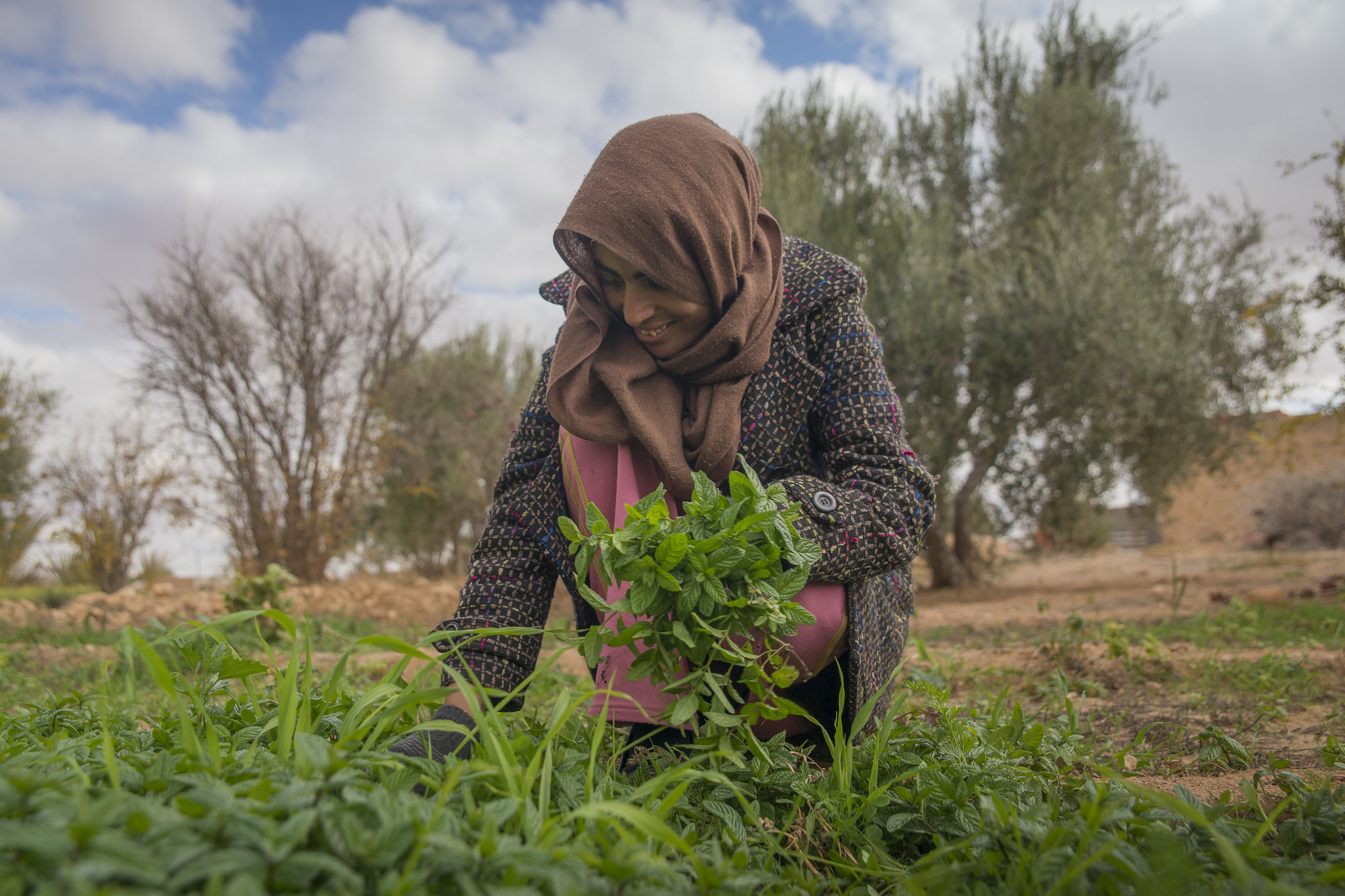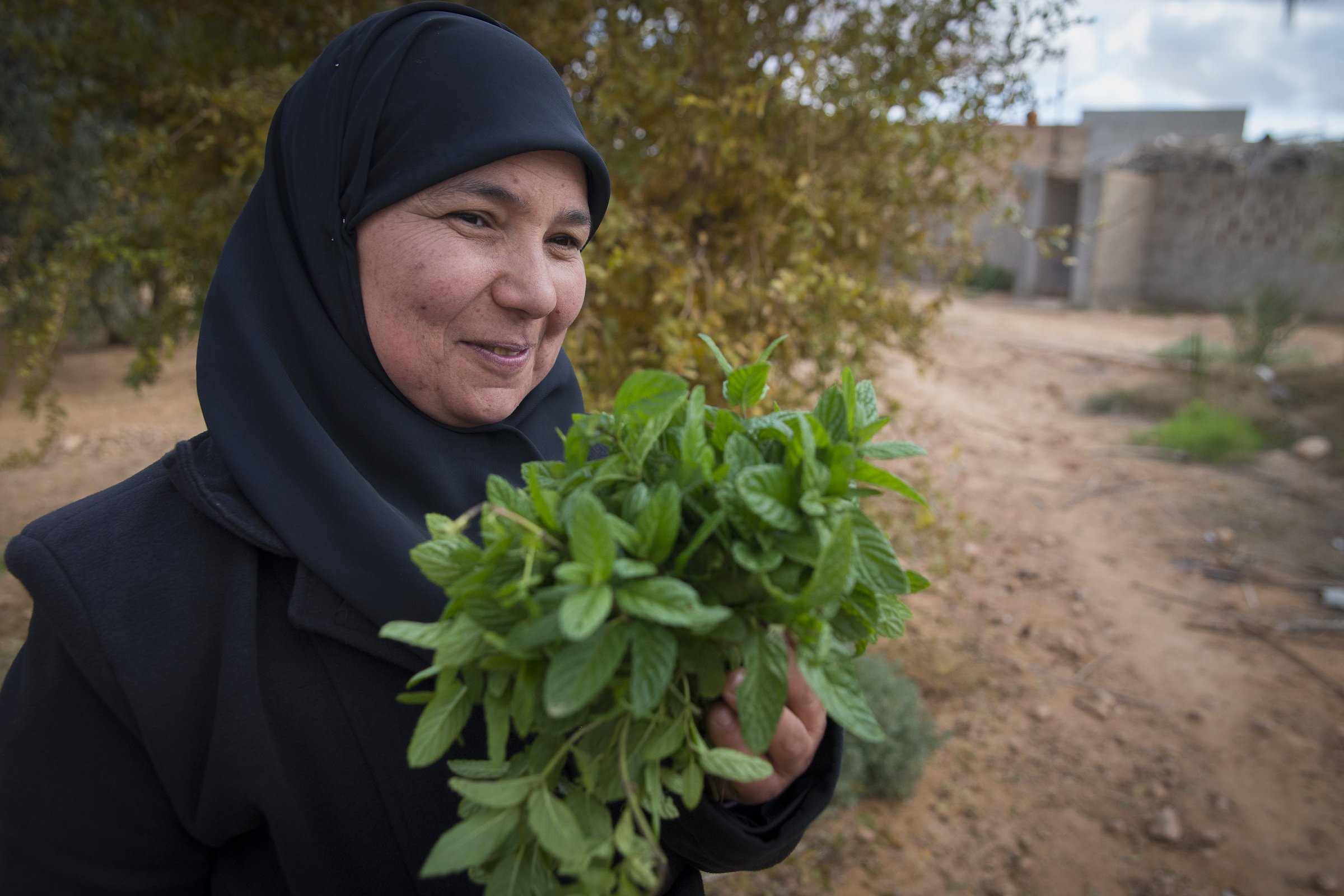Four ways of strengthening gender equality in the agricultural sector in the MENA region

When it comes to labor markets, the Middle East and North Africa (MENA) is one of the most gender unequal regions in the world. The male labor force participation rate in MENA is no different from other regions, at around 75%, but female labor force participation rates have remained stubbornly low, at around 20% .
Agriculture is the largest employer of women in the MENA region and the female share of the agricultural workforce increased from 30% in 1980 to almost 45% in 2010, exceeding 60% in Jordan, Libya, Syria and the occupied Palestinian Territory. However, women in the region still face significant challenges accessing land and benefitting from technologies and decent, equitable working conditions.
In the fall of 2019, a group of experts, including London School of Economics and Political Science (LSE) professor of Gender and Development Naila Kabeer, came together to discuss the persistent limited access to labor market opportunities for women in South Asia and MENA, despite an increase in women’s education and access to fertility planning. The workshop organized by LSE discussed barriers, opportunities and policy challenges.

Vegetable gardening in Tunisia. (Photo: ICARDA)
We share some of the expert panel’s key recommendations for the MENA region, which featured research funded by the CGIAR Research Program on Wheat.
1. Recognize women as workers not helpers
According to the World Bank, agriculture employs 36% of women and 22% of men in Egypt. However, research shows that women who work in agriculture are widely categorized as “helpers” to male workers rather than workers in their own right. What’s more, women are listed as “housewives” on their national ID cards, while men are listed as “agricultural workers.” As a result, these women are unable to even access opportunities to bargain for better wages and working conditions.
Legally and socially recognizing these women as workers is a first step to introducing equal pay legislation for men and women in agriculture. It would also justify their inclusion in agricultural extension services and strengthen social protection measures.
2. Change perceptions of property ownership
The MENA region has the lowest level of women’s landownership in the world, at just 5%. Our research findings indicate completely different perceptions of ownership among women and men.
Research in Egypt shows that women tend to identify land officially owned solely by themselves as belonging to themselves and their husbands. Men, on the other hand, are less likely to consider their wives as co-owners, identifying male relatives instead.
In the New Lands — lands irrigated after the building of the High Aswan Dam in Egypt — there are land distribution quotas to encourage more land ownership among women. This has enabled some women to gain significant economic, social and political power. Despite this, these women still prefer to bequeath their land to their sons rather than their daughters due to social pressure and the expectation that their sons will provide for them in their old age.
To mitigate these low levels of women’s land ownership, policy change on its own is not enough. Changing perceptions of land and property ownership needs to go hand in hand with changes at a policy level.
3. Enforce legislation for equal pay and zero tolerance for sexual harassment
In Morocco, female employment in agriculture has jumped from 29% in 1980 to 48% in 2010. However, women’s wages, working conditions and bargaining power have not risen with it.
Research shows that women are designated lower paid and more time-consuming tasks, and are systemically paid less than men, even for the same tasks. Women agricultural workers also face high levels of sexual harassment and have limited bargaining power.
Moroccan legislation already stipulates equal pay and zero tolerance for sexual harassment. However, enforcement remains extremely weak. Enforcing existing pro-active legislation is an essential step towards equality for women in agriculture.
4. Revitalize agriculture as a valuable and necessary occupation in society
Much of the world sees agriculture as an occupation of last resort. When surveyed, men and women in Morocco both complained about agricultural work being an unstable and unreliable way of making a living. Women were found to be hired more easily but only because they were paid less than men.
To shift how agriculture is viewed and rebrand it as an important and respected occupation, it needs to be reformed as a safer, more equal and respectful space for both women and men.

Building resilience for smallholder farmers in marginal drylands. (Photo: ICARDA)
A key overall take-away message from the expert panel is that supportive policies alone are not enough. Rather, in order to tackle the institutionalization of harmful gender norms and stimulate actual change in practice at all levels, policy interventions need to go hand in hand with strong consciousness-raising, critical reflection and behavior change initiatives.
For further contact:
Dina Najjar, Gender Scientist ([email protected])
Lone Bech Badstue, Strategic Leader – Gender Research ([email protected])
Read the full report:
Women’s access to market opportunities in South Asia and the Middle East & North Africa: barriers, opportunities and policy challenges
